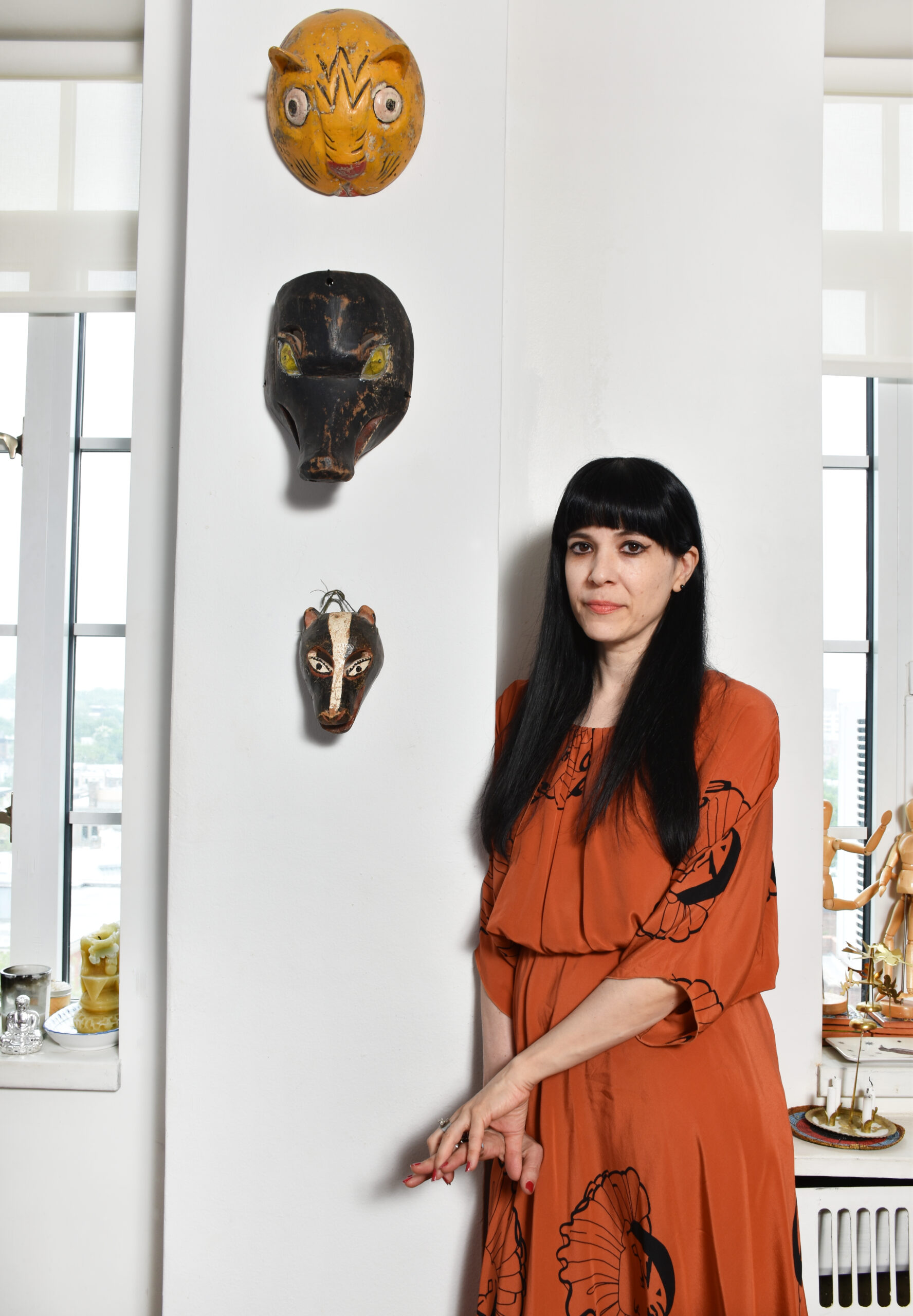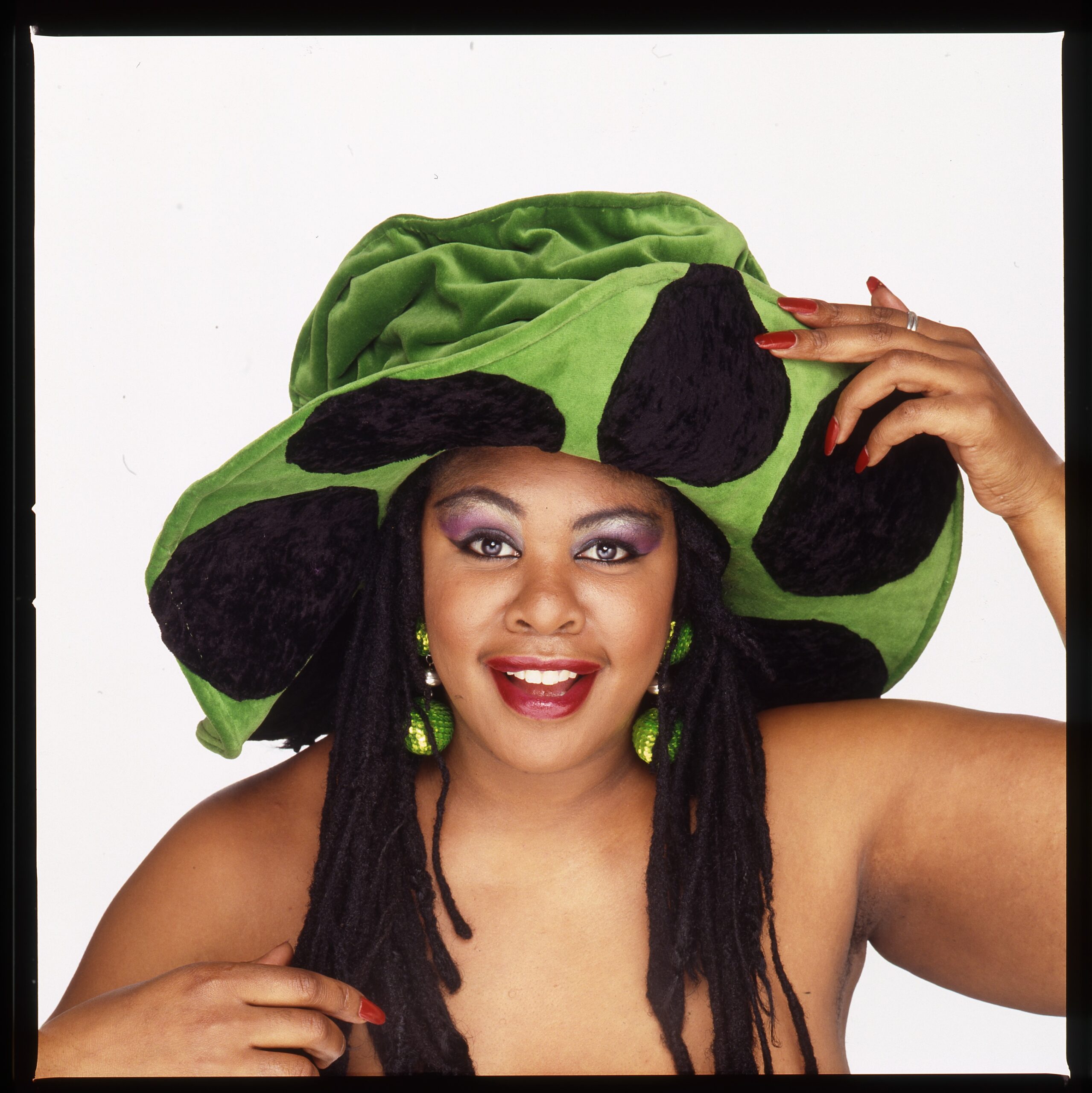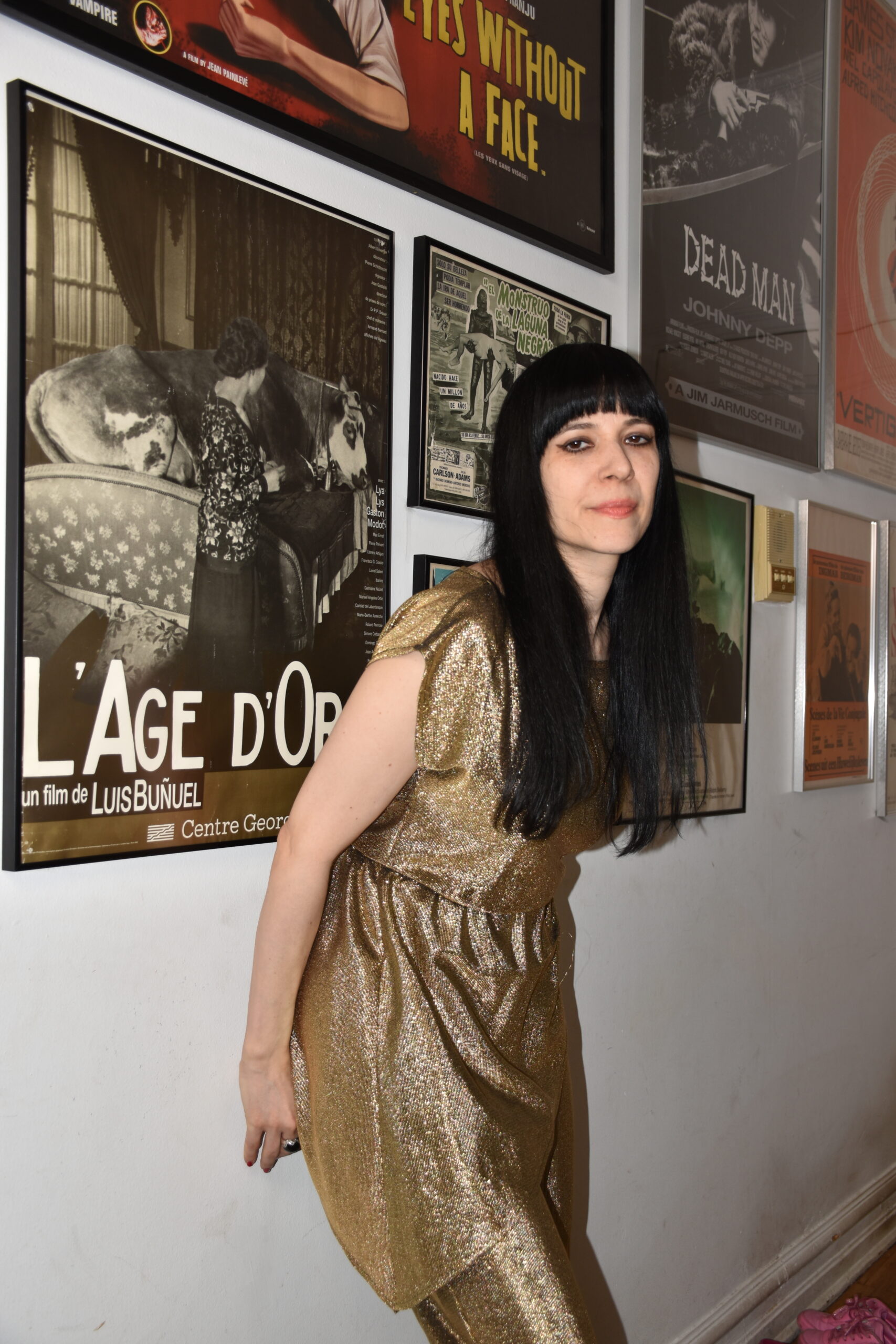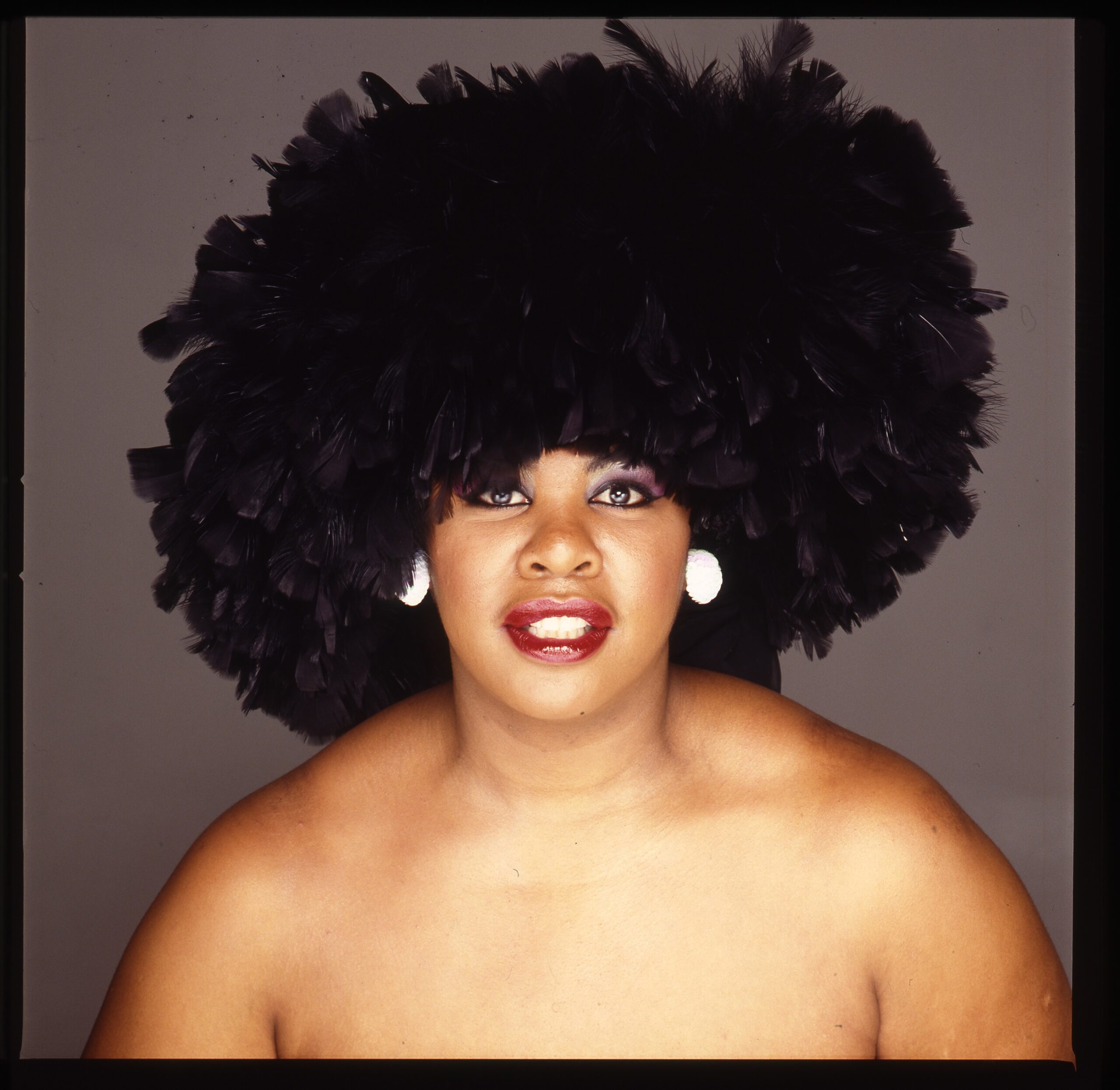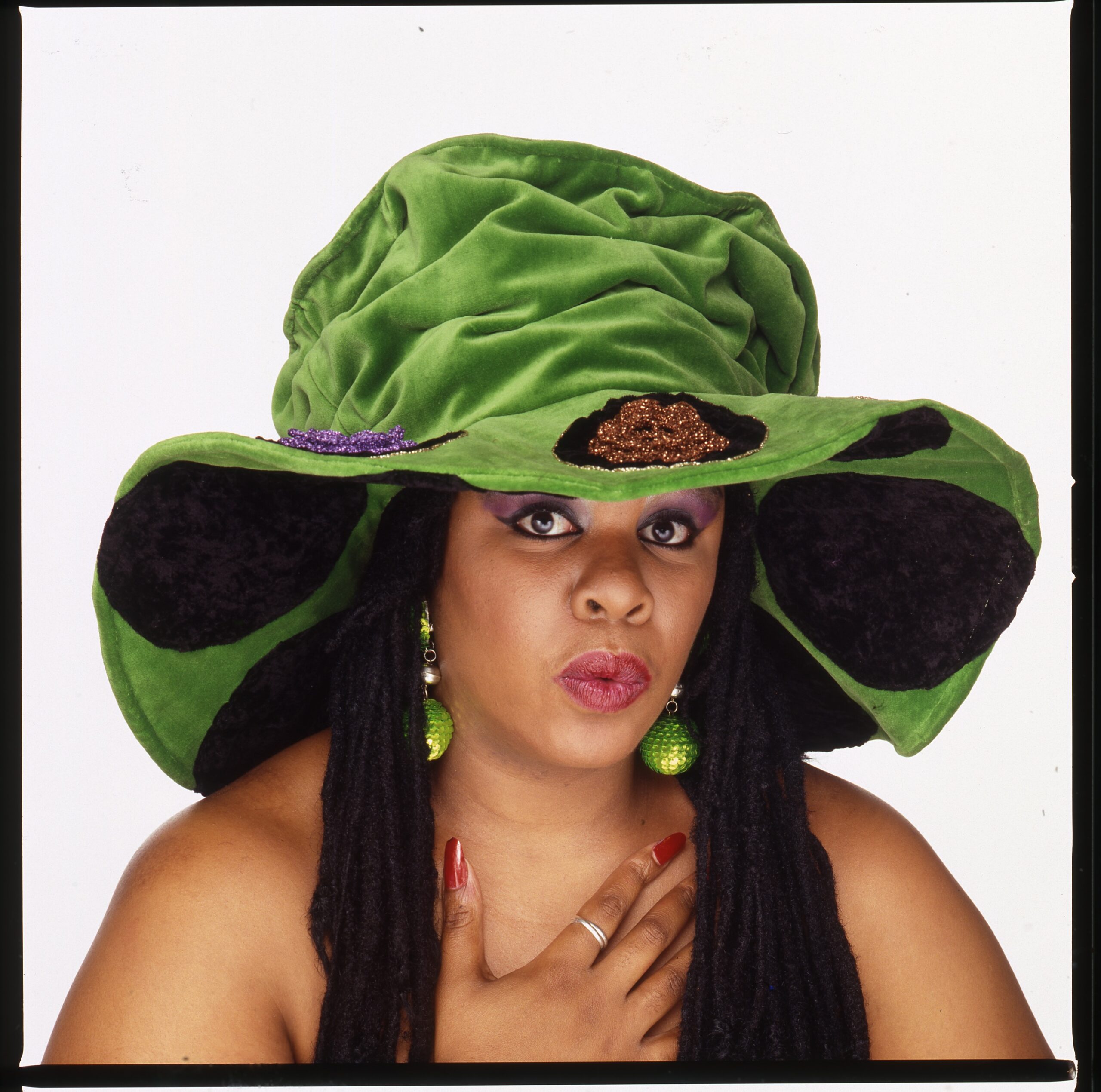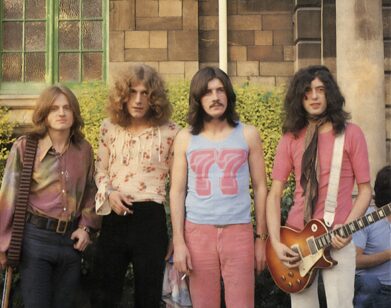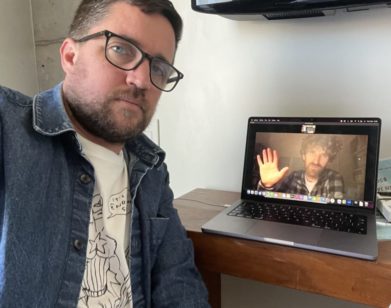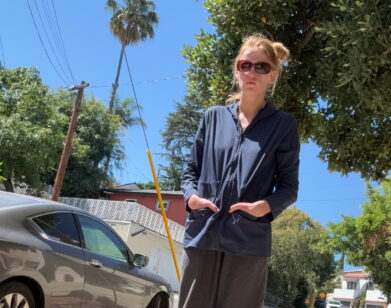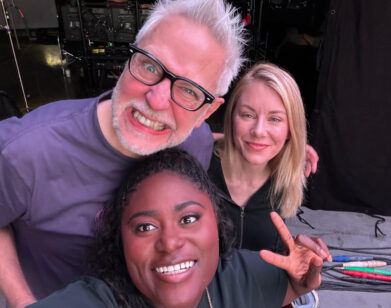ICON
Inside Goodbye Horses, the First Documentary About the Mysterious Q Lazzarus
Film is a fitting medium with which to finally tell the story of Q Lazzarus, the cinephile’s idea of a rockstar. In 1987, Diane Luckey, as Q was born, was working as a musician and taxi driver in downtown New York when acclaimed American director Jonathan Demme climbed into her cab. He heard her working on a melody from the front seat and passed along his card. She responded by sending him a cassette of her demos, including a track called “Goodbye Horses,” which the filmmaker then featured in his movies Married to the Mob (1988) and The Silence of the Lambs (1991). While the latter film would go on to sweep the 1992 Academy Awards, Q Lazzarus remained an obscure gig musician.
In the early 90s, Luckey moved to London with her band, staying in touch with Demme. She came back to the States to appear in his legal drama Philadelphia (1993) as a party performer covering the Talking Heads song “Heaven.” Aside from what Demme paid her, she made no money off “Goodbye Horses,” which became a cult classic. Decades passed and Q vanished from the New York and London scenes she’d been a part of. In 2018, Dazed speculated that she was dead. She briefly joined the app formerly known as Twitter to dispute this, then retreated once again from the invasive glare of the public eye, remaining a driver for a ride-sharing service.
It took the happenstance of another filmmaker getting in her car to commence her second act. This was Eva Aridjis Fuentes, who’d written, produced and directed five feature films by the time Luckey picked her up from her home in Brooklyn. She came to earn Luckey’s confidence, and the project they began together evolved into Fuentes’ sixth feature, Goodbye Horses: The Many Lives of Q Lazzarus. It was supposed to have a happy ending, but Luckey tragically passed away in 2022, leaving the task of explaining her disappearance to the director. While the film travels to select cities, its accompanying soundtrack, Q’s first and final album, is set to release on February 21st. To mark the occasion, the director and I got together last month to discuss her plans for the documentary’s rollout and her responsibility as custodian of the late singer’s legacy.
———
THORA SIEMSEN: Hi, Eva. How are you?
EVA ARIDJIS FUENTES: Good, how are you?
SIEMSEN: I’m doing well. I’ve seen your new film a few times now. It’s heartbreaking.
ARIDJIS FUENTES: Thank you. People have cried a lot while watching it, but they’ve also laughed a lot at certain moments. Luckily, there’s some comic relief peppered throughout.
SIEMSEN: Yeah, Q’s funny. I think people might be surprised to learn that.
ARIDJIS FUENTES: She is an incredible storyteller and every time she’s telling a story, even if it’s very heavy, she finds some way of injecting some humor into it.
SIEMSEN: What was your first encounter with Q like?
ARIDJIS FUENTES: I called a car to go from my home in Brooklyn to Manhattan. I was meeting a friend for lunch in SoHo and I was running really late. Normally, I don’t take cars during the day, but I did that day. Q normally would work at night, but that day she had a client that had booked her for the whole day. He was in a meeting, so she decided to do another ride while she was waiting. I got into her car and she was playing Neil Young’s “Harvest,” which I was struck by. A lot of times if you get into an Uber, people are just listening to the radio. She was playing a CD.
We started talking about Neil Young a bit, and we were singing together. Her GPS wasn’t working, so when we got to Flatbush Avenue—which, for people who don’t know New York City well, is a very big avenue that takes you from Brooklyn to Manhattan—instead of making a left to go to Manhattan, she made a right and started going further into Brooklyn towards Crown Heights. I said, “Oh, we were supposed to make a left on Flatbush.” And she said, “I don’t know what that is. You tell me baby, this is your town.” And I said, “Well, where do you live?” And she said Staten Island. A few months earlier there had been somebody at Dazed magazine that had tried to find her. Her real name was Diane Luckey and they had seen that there was a Diane Luckey listed in the phone book, or the online version of the phone book, living in Staten Island.
The Staten Island thing jumped out at me, and then also the Neil Young thing, that she was a music person. I asked her if she’d ever seen Neil Young in concert and she said, “Oh, my concert days are long gone,” which also struck me as something a music person would say. And she was about the right age, from what I could tell. She was wearing sunglasses and a turban. I had a suspicion that she could be Q Lazzarus. Obviously, I knew that Q Lazzarus had been a taxi driver back in the day. So I said, “What about Q Lazzarus? Did you ever see her in concert?” And she was taken aback and she said, “I’ve heard of her,” and changed the subject. When we got to Manhattan, I was about to get out of the car. She turned and extended her hand—she was six-feet tall and had enormous hands with fake nails—and said, “Nice to meet you, Eva. I’m Q.” And I said, “Oh, I thought it could be you.” And she said, “How did you know?”
SIEMSEN: That’s amazing.
ARIDJIS FUENTES: I was going to start telling her, but there were all these cars honking because we were holding up traffic, and I said, “I’m a fan. Can we get lunch or a cocktail?” She said, “Let me think about it, give me your number.” So I put my number in her phone and she went on her way. I didn’t think I’d hear from her because it was clear to me that she was around and obviously had gone off the world’s radar by choice. But I said, “Well, New York still is magic.”
I was very excited that I had met her. The friend I was having lunch with was a big fan as well. He was very excited. That night, I actually went dancing at the Pyramid. They used to have an 80s night on Thursday nights at the Pyramid, and they played “Goodbye Horses.” The whole thing felt very fated and magical. The next morning, I got a call from a number I didn’t recognize, and she said, “Eva, it’s Q. I had a dream about you last night.” I said, “Was it a good dream or a bad dream?” She said, “Girl, if it was a bad dream, I wouldn’t be calling you. I was performing and you were there, and it was the first time I dreamt that I was performing in 15 years.”
So we met for lunch at Mogador, which was maybe one of the only places in the East Village that was still there from her time living in the East Village in the 80s. This was 2019. I told her I was a filmmaker and that I made documentaries in addition to fiction films, and she started telling me about her life and why she disappeared and everything that’s in the film, which is quite dramatic. There’s all the things that happened to her in the 90s when she came back from England, and it was a domino effect, one thing happening after another. Not only did she give up on her dream of having a musical career and success, but also she had all these personal struggles. I think she didn’t really want people to know what had happened to her because it was so dark.
Another thing that eventually happened, as you saw in the film, was she had a son who she started taking care of when he was six. She was unable to take care of him for the first years of his life. She felt very guilty about that and she was very focused on raising him. She went back to driving cars and just buried Q Lazzarus. She was also taking care of her disabled husband at the time. When we met, her son James [Luckey Lange] was a senior at FIT, so I think for her, it was also a timing thing. She said, “Hey, my son is about to graduate from college and get a job. Maybe I can go back to my music.” She took meeting me as a sign of that. There were just a lot of elements, from her GPS not working to where she was at in her life when we met, to what she was listening to when I got in the car. The fact that I took a car, the fact that she was driving during the day. All these little things that conspired to have us meet and wind up making this film together.
SIEMSEN: You bring yourself into the story just the right amount, I think.
ARIDJIS FUENTES: I don’t like putting myself in my films. In my other documentaries, at most, you’ll hear my voice asking a question. With this one, I ultimately decided to put myself in it a little more because, first of all, people love the story of how we met. The fact that she had disappeared and there was all this speculation as to what had happened to her, and then I was the first fan who came across her and found out what happened. It’s also just setting up the film for people who don’t know who she is, which is probably most people in the world, because she never had a record deal or anything like that.
Also with COVID, it basically became me and her continuing to film and spend time together. I wound up doing the camera work and sound recording and editing and producing. I was doing everything at that point, and that’s when things got very intimate and she started telling me a lot of more personal things. The ending of the film was going to be her comeback concert, and I was going to stay with the whole Lazzarus part of her name, the rise and the fall and the resurrection. Some people thought she was dead. Here she is coming back from the beyond and rising again, and it was going to be filmed, her reuniting with her bandmates from England that also had no idea what had happened to her, hadn’t seen her in 25 years.
It was going to be this happy ending really, her return to the stage, finally getting the attention and appreciation she deserved. When she passed away very unexpectedly and tragically—she was only 61—I had to come up with a new structure for the film. There were things I was going to film that I wasn’t able to film. I had to work with the material I had. I decided to make it a little bit more about our relationship, not too much, but I put in some voicemails that she had left me as a way of bringing some consistency to the style of the film. My first cut, it was like two different films. The first half was a music biopic where there was archival footage of her back in the day, there were photographs, there was her talking about making music. And then the second half of the film was just a very personal story, which didn’t have anything to do with music, really. It was about all her struggles with addiction, with heartbreak, with homelessness, incarceration, a mother-son story, how being a woman of color affected her.
At some early feedback screenings, friends and colleagues were like, “Well, it feels like two different films.” And some people liked the first half more and some people liked the second half more. So I was like, “Okay, I need to find a way of making this feel like one piece.” So by bringing in these three voicemails that appear at specific moments in the film, I was able to make it feel a little more fluid, hopefully.
SIEMSEN: A rep cinema here just played Jonathan Demme’s Philadelphia, which I went to see. It was so nice to watch Q on the big screen. I’m glad audiences are getting that chance now with your film. How have your theatrical screenings gone so far?
ARIDJIS FUENTES: They’ve been incredible. The audience reactions have been beyond what I had expected or dreamed of. It was such a difficult film for me, starting with COVID and trying to find the financing, to her passing away, which was obviously the most difficult thing because we’d become really good friends. It wasn’t just about losing the protagonist of my film before we were done filming. With COVID and her hip surgery and then her final stint in the hospital, a lot of times we weren’t even talking about her music or my film anymore. We were just talking about life.
When she passed away, it became much more difficult to find the financing, I think because it wasn’t going to have a happy ending anymore. She wasn’t going to be here to promote the film anymore, she wasn’t going to be performing anymore, and she’s not a household name. Because of COVID and the writer’s strike and the actor’s strike, there’s an excess of documentaries, especially last year and the year before. There was a lot of competition for financing, there’s a lot of competition at the festivals, so it’s been a real struggle, this film. Finally, I just decided I’m going to just self-release it and get it out there. I helped set up the record deal and Sacred Bones for the soundtrack, and I was invited to screen it at this festival in Mexico, the Morelia Film Festival, which is the most important and best film festival in Mexico, and the screenings went incredibly well. There was a standing ovation and I won the audience award, and the day after my premiere, I got three distribution offers from the biggest doc distributors in Mexico.
So I feel like even though the film isn’t particularly cinematic per se, I think it’s playing really well in a theater setting with audiences because it is a very emotional film. I’m now doing a bunch of theater screenings before I release it online. I did London, L.A., New York, Philly, San Francisco. I’m talking to someone about doing screenings in Toronto, Denver. Every week, I get somebody writing to me saying, “Oh, I want to screen it at this theater or at this part of the series.” There’s a lot of interest in the film because I think people’s connection to “Goodbye Horses” is very deep and people really want to know what happened to her, they want to hear her other music.
SIEMSEN: I rewatched Married to the Mob and The Silence of the Lambs recently too. Seeing the latter as a teenager was your introduction to Q’s music, right?
ARIDJIS FUENTES: Yeah, I think it was for a lot of people. Maybe not so much with the young people now, but certainly my generation, people who went to see The Silence of the Lambs when it came out. I think younger people are probably hearing it at clubs or they’re hearing covers of it as well. I feel like every year, there’s three more covers of the song. It might be the most covered song of contemporary music. It’s almost like it’s public domain or everyone thinks that no one else knows it.
SIEMSEN: You told fellow documentarian Matt Wolf last year: “My film is a portrait of a woman of color who was failed by the music industry, the medical system, the legal system, you know, just from many, many institutions across the board.” I love Matt’s work and thought his interview was fantastic. Could you elaborate on how these systems let Q down?
ARIDJIS FUENTES: Well, the music industry was the first one, and there’s a lot of talk in the film, especially when she was in London and had a full band and a manager, about how she couldn’t get a record deal because people couldn’t market her because she was a large Black woman singing rock music. And at the time, even though rock and roll was created by Black people, they wanted her to be singing R&B.
And then the legal system, she got caught up in the tail end of the crack epidemic, the late 80s, early 90s. As she says in the film, her sentence for dealing a few little chunks of crack was three to life, the same type of sentence that people who were selling millions of dollars of cocaine were getting. It’s been well-documented how during the crack epidemic—which affected mostly Black and Latino communities, but especially the Black communities—the incarceration rates and the sentences given to people who were caught selling crack or smoking crack were just crazy. It was a racist thing, because she was a woman of color and the punishment wasn’t really proportionate with the crime, with these nonviolent crimes.
And ultimately, the medical system. She broke her leg and had surgery and died of sepsis. She was 61. You’re not supposed to die from breaking your leg in 2022 in New York City—that’s insane. The hospital she went to in Staten Island was not very good. She had Medicaid, and when she had her hip surgery, she was able to get that done at the HSS, the Hospital for Special Surgery in Manhattan, which is one of the best hospitals in the country for that. But when she broke her leg, she was at home in Staten Island, and she was rushed to the nearest hospital. It’s not very clear if it was at the hospital or in the rehab that she went to after where she was learning how to walk again, but it’s most likely the hospital where she got the sepsis.
The film isn’t blatantly about race, but it’s definitely an underlying theme that crops up a few times. It’s clear without it having to be said explicitly, that being a woman of color made all of these things much more difficult, from her artistic career to her legal problems to ultimately the accident that led to her dying.
SIEMSEN: How do you feel about becoming a custodian of Q’s legacy?
ARIDJIS FUENTES: I was very honored that she chose me to be the one to tell her story to after disappearing for 25 years. And a lot of what she tells me in the film, she had never told anyone. When James, her son, saw the film in Morelia at the world premiere, he was still processing everything. He said, “Most of what you learned about my mother I just learned.” I feel very blessed that I met her, that she trusted me with her story, that I got to spend three years filming her and being friends with her.
Once she passed away, that very special blessing, if you want to call it that, became a much bigger responsibility. No one else was going to film her, no one else was going to photograph her. Suddenly, there was a lot more riding on this. This film is going to be basically how most of the world gets to know her. What I included or didn’t include mattered a lot more. One of the reasons it took me so long to finish the film is because I was editing for years and trying different structures, really trying to think of the best way to honor her legacy. She was larger than life, and she had so much presence and so much vitality that when she died, it was just impossible to really wrap my head around the fact that that had been extinguished.
I hope I captured her spirit. Obviously, there was also a lot more footage and all the stories were a lot longer, and there’s more music, but one also has to edit and choose. I hope that I did justice to the many things that she had to offer, her musical talent and incredible voice, her great storytelling and fascinating and dramatic life, her wonderful sense of humor, her bravery, and the fact that despite going through all these really heavy things, she wasn’t jaded at all. She was a very strong and confident and optimistic person, and she had great style. She’s really interesting to watch and look at. In the film she wears five different wigs. Unfortunately, the wigs were thrown out when she passed away. I would’ve loved to keep them, but I guess no one was thinking about that at the moment.
There were many more things that happened during her life that didn’t make it into the film because it was just too much, or there was no archival for it, or she didn’t talk about them in detail. But she, like her son, worked on a fishing boat in Alaska at one point. She was married to a Mormon from Finland that she met at the Port Authority Bus Terminal. She traveled around South America for a few years with a friend. She worked at an S&M club called Hellfire.
SIEMSEN: What a life. What do you miss most about her?
ARIDJIS FUENTES: I miss how we would order Middle Eastern food and smoke cigarettes and drink wine. I miss talking about life and hearing her stories and her giving me advice. She was very maternal with me, and she loved my daughter too. I miss hearing her voice and her jokes and having her here in my home hanging out more than anything. At the end, it wasn’t so much about the film or her music anymore. It was just two women talking about the world and motherhood and creativity.

